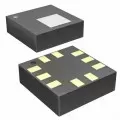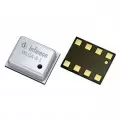OUTLINE:
What Is A TMAP Sensor And How Does It Work [Detailed Explanation]
 2211
2211In the intricate world of automotive engines, a multitude of sensors work tirelessly to ensure optimal performance and efficiency. Among these unsung heroes is the TMAP sensor.
Therefore, if you want to have a better understanding of “What Is A TMAP Sensor”, just scroll down to learn more, and hope this blog will help you.
Part 1: What Is A TMAP Sensor
TMAP Sensor = Temperature Manifold Absolute Pressure Sensor.
In short, a TMAP Sensor is a device that measures the pressure and temperature of the intake air in an engine.
In the world of modern automotive technology, turbocharged engines have gained immense popularity for their ability to deliver enhanced performance and efficiency. At the heart of these engines lies a crucial component known as the Turbocharged Manifold Absolute Pressure (TMAP) sensor. It is a part of the engine control module (ECM) used to make precise adjustments to fuel mixture, ignition timing, and exhaust gas recirculation (EGR). And then optimize optimal engine performance, fuel economy, and emissions for a car.

Part 2: What Does A TMAP Sensor Do
As mentioned above, the TAMP sensor is used to measure both the pressure and temperature of the air entering the engine's intake manifold.
However, there are more functions TAMP sensor have, such as:
- Intake Air Pressure Measurement
- Intake Air Temperature Measurement
- Ignition Timing Optimization
- EGR Control Support
- Overall Engine Performance Enhancement
Part 3: The Location of TMAP Sensor
The position of the TMAP sensor changes according to the make and model of the vehicle. However, it is usually installed on the intake manifold. Typically, you must search for a guide that is particular to your car's model.
However, there are some general guidelines for locating the TMAP sensor you can refer to:
1. Open the hood of your vehicle and locate the intake manifold. The intake manifold is usually a large, metal duct that runs from the air filter to the engine block.
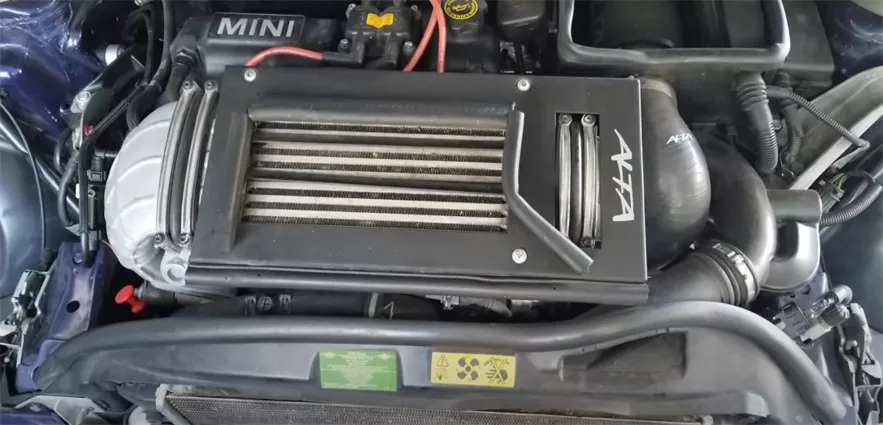
2. Look for a small sensor with a connector attached to it. The TMAP sensor is typically a small, black, or gray sensor with a single or two-wire connector.
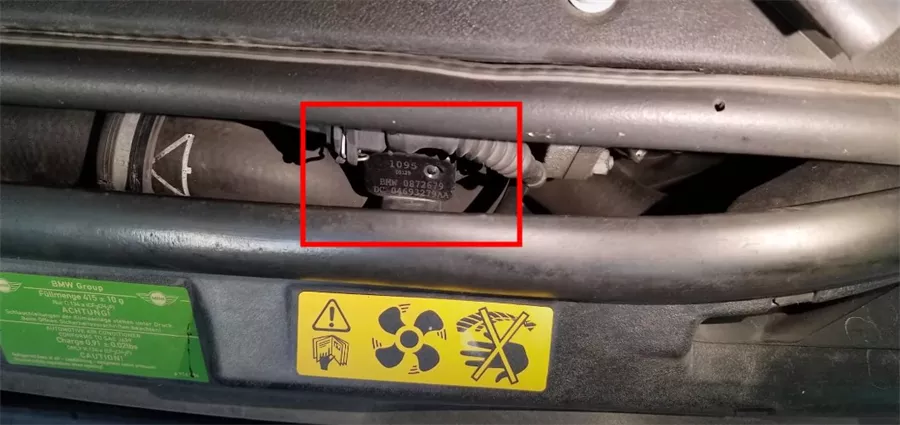
3. Consult your vehicle's service manual for the exact location of the TMAP sensor. The service manual will have a diagram that shows you where the sensor is located and how to remove and replace it.
If you are still unable to locate the TMAP sensor, you can always consult a qualified mechanic for assistance.
Part 4: The Difference between the MAP sensor and the TMAP sensor
The MAP (Manifold Absolute Pressure) and TMAP (Temperature Manifold Absolute Pressure) sensors are both key components of modern engine management systems, giving critical information for optimizing engine performance, fuel efficiency, and emissions. However, there are some significant differences between the two sensors.
MAP Sensor
The MAP sensor measures the absolute pressure of the air in the intake manifold. This information is used by the engine control module (ECM) to calculate the air density, which is a critical factor in determining the appropriate fuel mixture. The MAP sensor is typically located on the intake manifold, near the throttle body.

TMAP Sensor
The TMAP sensor measures both the pressure and temperature of the air in the intake manifold. This provides the ECM with a more complete picture of the intake air conditions, allowing it to make more precise adjustments to fuel mixture, ignition timing, and exhaust gas recirculation (EGR) control. The TMAP sensor is typically integrated into the throttle body or mounted on the intake manifold.
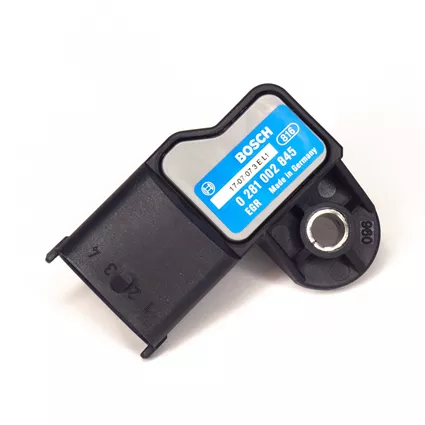
Part 5: Chipsmall - We Provide the Cheapest Sensor
At Chipsmall, we understand that customers are looking for the best value for their money. That's why we strive to provide our customers with the cheapest sensors on the market.
We offer a wide range of sensors at competitive prices, so you can be sure that you're getting the best possible value for your money. Our sensors are:
- High-quality: Our sensors are manufactured to the highest standards, ensuring that they are accurate and reliable.
- Durable: Our sensors are made from durable materials that can withstand the harsh conditions of the automotive environment.
- Compatible with a wide range of vehicles: Our sensors are compatible with a wide range of makes and models of vehicles.

Part 6: What Is A Map Sensor And How Does It Work
After having a better understanding of TMap Sensor, you may also be interested in a Map sensor. Here we will introduce this little thing to you and the operating principle behind it.
What Is Map Sensor
A manifold absolute pressure (MAP) sensor is a crucial component in an internal combustion engine's electronic control system. It measures the air pressure inside the intake manifold, which is the duct that delivers air from the air filter to the engine's cylinders. The MAP sensor sends this information to the engine control module (ECM), which uses it to determine the optimal amount of fuel to inject into the engine.
Purpose of the MAP Sensor
The MAP sensor is critical to ensuring that the engine runs smoothly and maintains the optimum air-fuel combination. By giving accurate pressure readings, the MAP sensor assists the ECM in adjusting fuel injection to match the engine's load and maintain the optimum air-fuel ratio. This ratio is crucial for maximizing combustion efficiency and reducing emissions.
Location of the MAP Sensor
The MAP sensor is typically located on the intake manifold, either near the throttle body or on the manifold itself. In forced-induction engines, such as those with turbochargers or superchargers, the MAP sensor is usually positioned on the intake tract before the turbocharger or supercharger.
Types of MAP Sensors
There are two primary types of MAP sensors:
-
Absolute Pressure Sensor: This type measures the absolute pressure of the air in the intake manifold relative to a perfect vacuum. It provides a more accurate indication of air density compared to a gauge pressure sensor.
-
Gauge Pressure Sensor: This type measures the pressure of the air in the intake manifold relative to ambient atmospheric pressure. It is less commonly used in modern engines.
How Does Map Sensor Work
While you're traveling along the road. As you press onthe gas pedal, the engine requires more air to burn more fuel and accelerate. The MAP sensor functions as a tiny assistant, informing the engine of the amount of air available. It accomplishes this by detecting the air pressure inside the intake manifold, the tube that transports air from the air filter to the engine.
The MAP sensor delivers this data to the engine control module (ECM), which functions as the car's brain. The ECM uses this information to determine how much fuel to feed into the engine. If there is insufficient air, the ECM will inject less fuel. If there is excessive air, the ECM will inject more.
Here's a step-by-step breakdown of how the MAP sensor works:
-
Air Intake and Pressure Changes: As the engine operates, it sucks air into the intake manifold. The amount of air drawn in depends on how hard you're pressing on the gas pedal. This changes the pressure inside the intake manifold.
-
Pressure Sensing Mechanism: The MAP sensor has a tiny diaphragm or silicon wafer inside it. This diaphragm or wafer is like a little balloon. As the pressure in the intake manifold increases, the diaphragm or wafer expands. As the pressure decreases, it contracts.
-
Electrical Signal Conversion: The expansion or contraction of the diaphragm or wafer changes its electrical properties. This change in electrical properties is converted into an electrical signal. The stronger the signal, the more air pressure there is in the intake manifold.
-
Signal Transmission to ECM: The electrical signal from the MAP sensor is sent to the ECM. The ECM is the computer that controls the engine. It receives input from a variety of sensors, including the MAP sensor, to figure out how to run the engine efficiently.
-
Air Mass Calculation: The ECM uses the signal from the MAP sensor to calculate how much air is flowing into the engine. This is important because the amount of air flowing into the engine determines how much fuel the engine needs.
-
Fuel Injection Adjustment: Based on the amount of air flowing into the engine, the ECM adjusts the fuel injection. It does this by opening and closing the fuel injectors. The longer the fuel injectors are open, the more fuel is injected.
-
Continuous Monitoring and Feedback: The MAP sensor is constantly monitoring the air pressure in the intake manifold. It sends this information to the ECM so that the ECM can adjust the fuel injection as needed. This helps to ensure that the engine is always running at its best.
In summary, the MAP sensor is a crucial component of the engine control system. It helps to ensure that the engine is always running efficiently by providing accurate air pressure readings. This helps to maintain the proper air-fuel mixture, which is essential for optimal engine performance.
The End
In conclusion, the TMAP sensor plays a vital role in modern engines, ensuring optimal performance, fuel economy, and emissions. Its ability to measure both intake air pressure and temperature empowers the engine control module to make precise adjustments, optimizing combustion efficiency and environmental impact. Now I am sure that you can clearly know what is a TMAP sensor!

Disclaimer: The views and opinions expressed by individual authors or forum participants on this website do not represent the views and opinions of Chipsmall, nor do they represent Chipsmall's official policy.

share this blog to:


